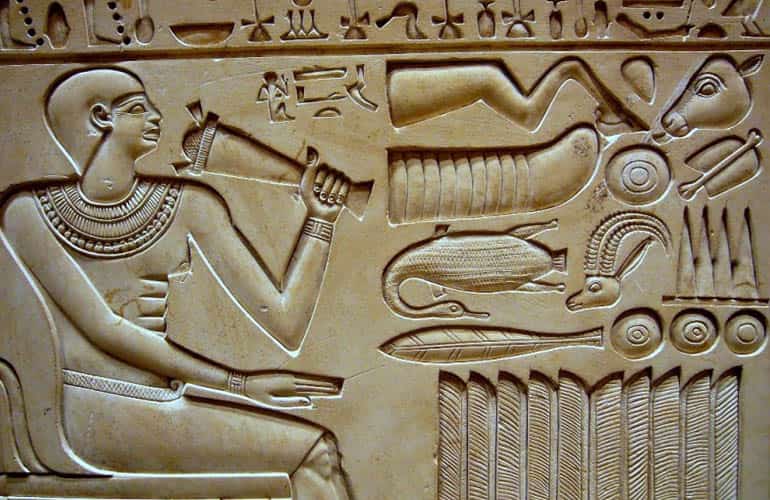
The Middle Kingdom of Ancient Egypt, a phase spanning approximately from 2055 to 1650 BCE, is often regarded as a pinnacle of cultural and political advancement. This era is marked by significant achievements that allowed Egypt to flourish, both economically and socially. One might ponder, what catalyzed this remarkable prosperity? Undoubtedly, it was a confluence of innovative governance, monumental architectural endeavors, and a cosmopolitan approach that positioned the Middle Kingdom as a beacon of ancient civilization.
To dissect the achievements that spurred this prosperity, we must first delve into the realm of political restructuring. The Middle Kingdom emerged from a chaotic period known as the First Intermediate Period, characterized by a fragmentation of power and social disarray. The ascendance of Mentuhotep II heralded a rejuvenation of centralized authority. His ability to unite Upper and Lower Egypt under a robust administration reinstated stability. This newfound emphasis on governance not only curbed internal strife but also fostered an environment conducive to commerce and trade. A cohesive political framework enabled the establishment of efficient bureaucracies that could manage resources judiciously, paving the way for socioeconomic advancement.
Central to the success of the Middle Kingdom was the innovative art of agriculture. The Nile River, revered as the lifeblood of Egypt, played an instrumental role in the agricultural transformation during this epoch. Through the adept management of irrigation systems, agricultural outputs surged, facilitating surplus production. Ingenious techniques such as basin irrigation, whereby fields were inundated and subsequently drained, significantly optimized the cultivation of staple crops such as wheat and barley. Consequently, this agricultural abundance translated into increased food security and trade efficiency, enhancing the overall wealth of the kingdom.
Furthermore, a burgeoning economy necessitated the establishment of trade networks. The Middle Kingdom is distinguished by its expansive trade relations, transcending regional boundaries. Not only were local goods exchanged, but the Egyptian merchants ventured as far afield as Nubia, the Levant, and even regions beyond the Mediterranean. This interaction fostered a rich exchange of culture and resources, introducing exotic materials such as ivory, incense, and semi-precious stones into the Egyptian market. The act of trade was not solely economic; it cemented Egypt’s position as an influential player in the ancient world, augmenting its cultural tapestry.
Equally noteworthy is the architectural prowess that epitomized the Middle Kingdom. The construction of temples and monumental structures not only showcased the Egyptians’ advanced engineering capabilities but also served a dual purpose: solidifying the pharaoh’s divine status and invigorating the populace’s sense of identity. The construction of the magnificent mortuary temple of Mentuhotep II at Deir el-Bahari stands as a testament to the era’s architectural brilliance. This era also witnessed the revival of pyramid building, albeit with a shift towards smaller, more complex structures. The evolution of architecture during the Middle Kingdom symbolized not only the pharaoh’s power but also the collective ambition of the society, further enhancing communal ties.
Moreover, a distinctive feature of the Middle Kingdom was its cultural renaissance. The era is often characterized as a golden age for literature and the arts, encapsulating the broader human experience and the ideals of the time. Literary works such as “The Tale of Sinuhe” and “The Story of the Shipwrecked Sailor” reflected not only sophisticated storytelling techniques but also philosophical explorations of identity, exile, and morality. Such literary advancements contributed to a burgeoning scholarly class that celebrated intellectual exploration. This culture of inquiry nurtured a populace that valued education and artistic endeavors, thereby enhancing social cohesion.
In terms of religious evolution, the Middle Kingdom saw a democratization of spiritual practices. Unlike the archaic period, where religious life was monopolized by a select priesthood, the Middle Kingdom experienced a shift towards inclusivity. The worship of deities became more accessible to the common people, thus fostering communal engagement in religious festivities and rituals. This burgeoning sense of religious participation cultivated unity among the populace, reinforcing the social fabric of Egyptian society. The deification of the pharaoh also took on new dimensions, as rulers began to position themselves as intermediaries between the gods and their subjects, further intertwining the political and spiritual spheres.
Finally, the Middle Kingdom’s adaptability must be acknowledged as a pivotal factor in its prosperity. Faced with shifting geopolitical dynamics and external threats from rival entities, the leaders of this era were astutely pragmatic. They engaged in diplomatic marriages and treaties to fortify alliances, thereby safeguarding their realm from potential invasions. This strategic flexibility enabled Egypt to not merely endure but thrive amidst external pressures, securing its place as an enduring power in the ancient world.
In conclusion, the achievements of the Middle Kingdom of Ancient Egypt were multifaceted, intricately weaving together threads of political stability, agricultural innovation, robust trade networks, architectural grandeur, cultural flourishing, and religious inclusivity. Each facet, while impactful in its own right, contributed significantly to the overarching narrative of prosperity during this illustrious period. Those who seek to understand the successes of the Middle Kingdom must appreciate this confluence of achievements, for it is within this intricate tapestry that one finds the essence of a civilization that not only endured but thrived against the vicissitudes of history.
